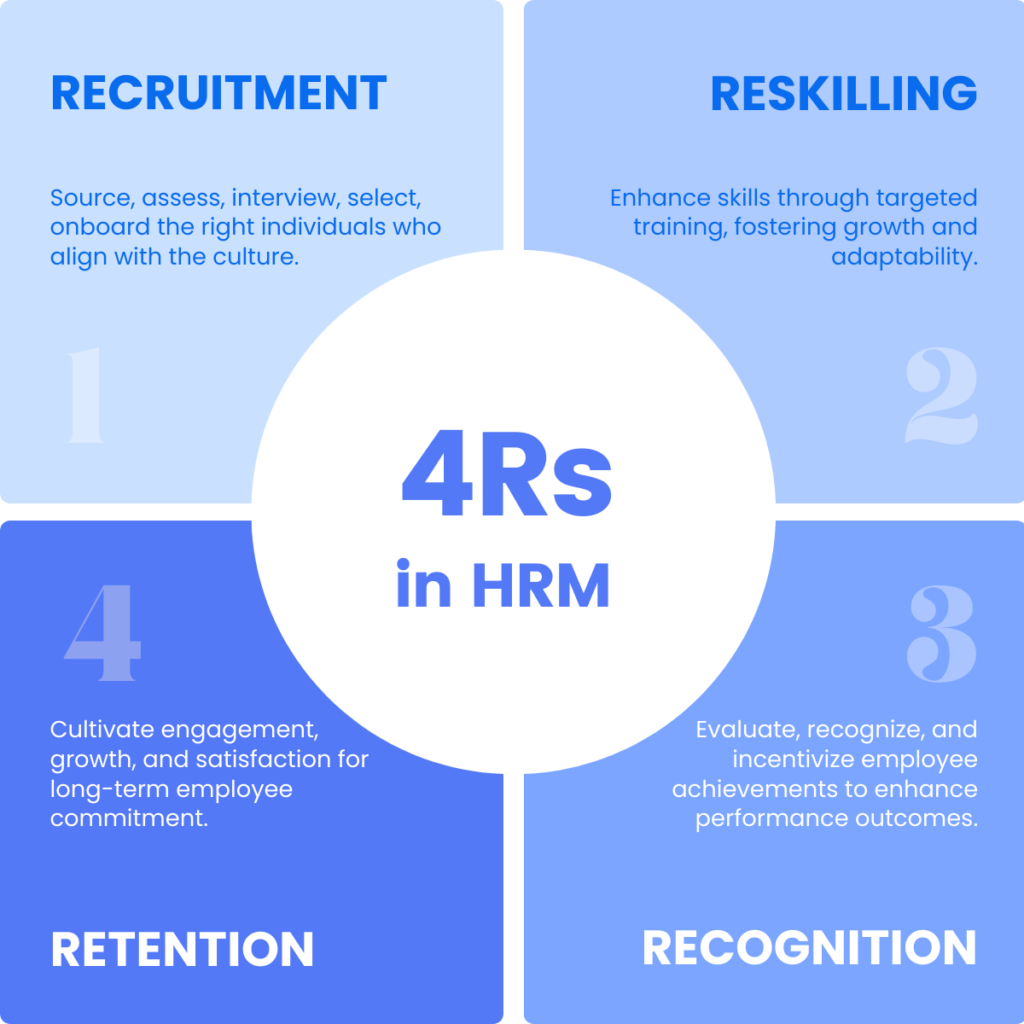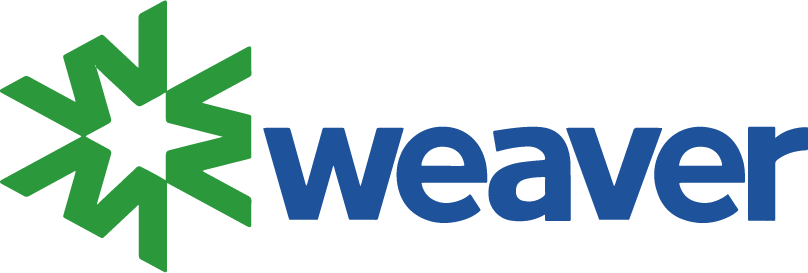In the dynamic world of Human Resource Management (HRM), success hinges on an organization’s ability to manage its most valuable asset – People.
The 4Rs HRM framework, in which we like to take in a different approach to discuss comprises of Recruitment, Reskilling, Recognition, and Retention. These components serves as the cornerstone for fostering a thriving workforce and driving overall success.
The 4Rs of Human Resource Management

Recruitment – Hiring the right people
Recruitment is about finding the right individuals who align with the organisational culture and can contribute meaningfully. By targeting the right talent pool, organizations increase their chances of securing long-term assets rather than mere employees. HR professionals’ role in the recruitment phase involves source, access, interview, select and onboard the candidate that best fit the requirements.
Reskilling – Development and training
The modern workplace craves continuous learning and growth opportunities. And organizations that excel at the development and training aspect of HRM recognize this and invest in their employees’ professional evolution. Robust learning management systems, mentorship programs, and access to relevant online courses empower employees to acquire new skills and stay updated in an ever-evolving landscape. When employees see that their growth matters, they are more likely to stay committed and engaged.
Recognition – Performance review and reward
Performance reviews are evolving from a one-size-fits-all annual ritual into an ongoing dialogue between managers and employees. The integration of real-time feedback mechanisms empowers not only progress tracking but also the alignment of goals with evolving objectives. Recognition goes beyond monetary; leadership roles and acknowledgement play in important part in boosting motivation intrinsically.
Retention – Creating an irresistible workplace
Employee turnover can be a significant drain on resources, both financially and culturally. Effective retention strategies are centered on creating an environment where employees are engaged, motivated, and emotionally invested.
Organizations today are implementing flexible work arrangements, career progression pathways, and personalized development plans to show employees that their growth matters. Thus, recognizing and celebrating achievements through regular feedback sessions and incentives strengthen the bond between employees and the organization.
How does an HRM platform help in 4Rs management?
Recruitment phase
A HRM platform significantly improves the efficiency, accuracy and effectiveness of the recruitment process by automating tasks, centralizing data, and providing tools to streamline the entire process.
- Job posting and distribution: Allows organizations to create and publish job listings to multiple job boards, social media platforms, and the company website. This helps in reaching a wider and more relevant audience.
- Centralizing resume collection from various channels: Assists recruiters to track and manage applicants, review resumes, and store candidate information in a single, organized and centralized database for efficient review.
- Resume or CV parsing: Automatically extracts relevant information from resumes and populates it into predefined fields or databases. This saves up time for easier analysis and reduces manual data entry errors.
- Collaboration and communication: Facilitates collaboration among hiring team members. Recruiters and hiring managers can easily communicate, provide feedback to candidates within the platform.
- Interview scheduling: Allow recruiters to coordinate interview times with candidates and hiring team members. This reduces scheduling conflicts and enhances candidate experience.
Reskilling phase
Meanwhile, in reskilling phase, an HRM platform assists by providing various tools and features designed to facilitate employee skill development and training. A centralized hub is provided for learning resources, assessment tools, and progress tracking.
- Personalized learning paths: Offer personalized learning paths for employees based on their current skills, job roles, and career aspirations. This helps guide employees through a structured reskilling journey.
- Progress tracking: Enable both employees and managers to track the progress of reskilling initiatives. This transparency ensures accountability and helps adjust the learning strategy as needed.
- Content library: Employees can get access to extensive libraries of learning content, which can include both internal training materials and external resources to empower their learning journey.
- Skill assessment and certification: Provide tools to assess employee’s progress and proficiency as they undergo reskilling. This can provide them with certifications or badges that validate newly acquired skills.
Recognition phase
In recognition phase, HRM streamlines the process of recognizing employee contributions, ensuring that appreciation is consistent, timely, and aligned with the organization’s goals and values.
- Real-time feedback: Allow managers and peers to provide instant recognition for their efforts, fostering a culture of appreciation and collaboration.
- Visibility and transparency: HRM platform make recognitions visible across the organization, promoting transparency and celebrating achievements in a wider context.
- Customizable recognition templates: Provide customizable templates for recognition messages, making it easy for managers to provide personalized acknowledgement.
- Reports and analytics: Generate reports on recognition trends, helping HR professionals identify patterns and adjust recognition strategies accordingly.
Retention phase
Tools and functionalities provided in retention will be focus on contributing to employee engagement, growth, satisfaction, and well-being, all of which contribute to a higher likelihood of employees staying with the organization.
- Employee surveys and feedback: Allow organizations to gather feedback from employees with survey tools. This feedback helps in identifying areas of improvement, addressing concerns, and creating a better work environment, which can lead to higher retention rates.
- Communication and collaboration: Good communication is vital for employee engagement and retention. HRM platform often include features for internal communication, knowledge sharing, and team collaboration.
- Exit interviews and insights: When employees decide to leave, HRM platform can facilitate exit interviews to gather feedback on their experiences. This information can provide insights into areas for improvement to prevent similar issues in the future.
Learn more about Weaver’s solution Human Resource Management (HRM).
Contact Weaver for more customized enterprise HRM platform services. Request your free demo today.
